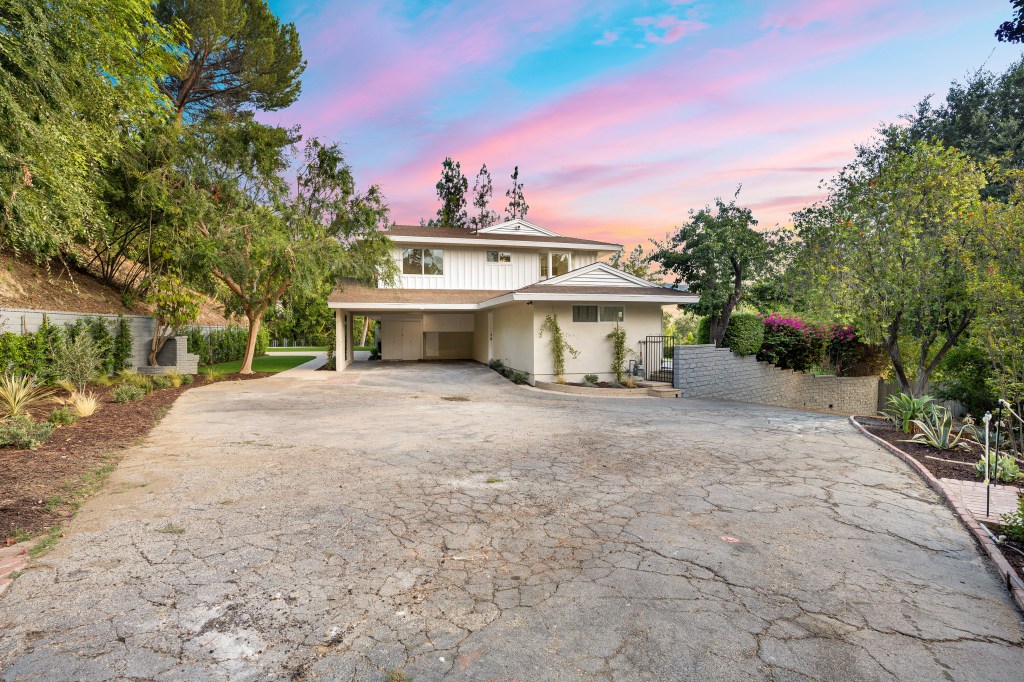Addressing the Challenges of Long-Term Vacant Homes: A Practical Guide

A house left vacant for months quietly transforms from a comforting shelter into a costly concern. Without regular oversight, small issues, like minor leaks or casual trespassing, can escalate into major repairs and complicated vacant property insurance claims.
The slow creep of decay, often unnoticed until it’s too late, can turn a once-welcoming home into a financial liability. High long-term vacancy rates not only affect individual homeowners but also contribute to the neighborhood impact of vacancy, lowering property values and increasing community risk.
However, long-term vacancy doesn’t have to mean long-term damage. With the right resources, owners can take proactive steps to inspect their properties regularly and prevent damage. When access, maintenance, and documentation are treated as a system, planned, scheduled, and tracked, homeowners can preserve both the property’s condition and its value, ensuring peace of mind even from afar.
How Long-Term Vacant Homes Deteriorate Over Time
When a building sits empty for extended periods, its systems begin to deteriorate quietly. Idle plumbing dries out, seals crack, and humidity creeps in, issues that often go unnoticed until visible signs of damage appear, like stained ceilings or warped flooring. Without proper moisture control and mold prevention, these small problems can quickly escalate. Repeated temperature swings, without the buffer of regular HVAC operation, accelerate wear on roofs, windows, and pipes. Seasonal changes also call for winterization and utility shutoff to avoid frozen lines, energy waste, and even fire hazards from neglected systems.
Over time, the structure begins to suffer from neglect, not just age. To prevent this, treat the building like a machine: it needs periodic runs, routine inspections for vacant homes, and detailed logs. Proactive care during long vacancies isn’t just smart, it’s essential for preserving the integrity and value of the property.
Insurance Readiness For Empty Houses
When it comes to insuring a vacant home, readiness is all about proving control over risk. Insurers want to see that the property is secure, utilities are properly maintained, and that there’s a clear record of oversight, like dated photos from each visit. These details matter. They can streamline coverage decisions and even influence pricing for vacant property insurance. Whether you’re preparing for seasonal gaps or managing long-term vacancy, consistent documentation and photo logs are key to staying ahead of potential issues.
Draw a clear line between proactive care and reactive repairs. Use cloud storage to keep records accessible, and ensure every visit includes checks for moisture control and mold prevention, winterization, and utility shutoff, and routine inspections for vacant homes. If you fail to maintain these standards, it could cost you, not just in repairs, but in lost coverage and higher premiums. Partnering with property preservation services helps maintain compliance and protects your money by reducing risk. A well-documented home is a well-protected one.
Securing Access Without Advertising Vacancy

Keeping a vacant property safe doesn’t mean announcing that it’s empty. The key is discreet, strategic security. Lock all unused doors and windows and keep active areas well-lit so approaches are visible and predictable. Simple upgrades, like reinforced strike plates, privacy window film, and clean sightlines, can significantly reduce the risk of illegal activity and opportunistic entry. For authorized access, use a coded lockbox with rotating codes to limit the circulation of untracked keys and promote responsible access.
These strategies support effective board-up and secure entry while helping with squatter prevention, vandalism and theft deterrence, and maintaining compliance with vacant property insurance. Combined with smart planning, they also make it easier to maintain documentation and photo logs and track incident records. Good security starts with subtlety and ends with peace of mind, especially when backed by practical tips and expert guidance.
Urban Rowhouses Versus Suburban Homes
Vacant homes face different vulnerabilities depending on their setting. Urban rowhouses often concentrate risk around rear alleys and basement windows, areas that are less visible and more accessible for opportunistic entry. In contrast, suburban homes tend to struggle with side doors and garage entries, which can be overlooked during routine checks.
Regardless of location, effective squatter prevention strategies are essential and should be applicable to the specific layout and risk profile of the property.
Trim overgrown vegetation to improve visibility, install motion-activated lighting to deter unwanted approaches, and reduce the number of active doors during the vacancy. Consider board-up methods for less-used entry points, especially around basement windows and walls, and use a coded lockbox with rotating codes to manage authorized access. Always photograph closures at the end of each visit as part of your inspection process, and maintain organized documentation and photo logs. These proactive steps help protect the property without signaling that it’s unoccupied.
Seasonal And Second Homes Left Idle

Seasonal and second homes often remain vacant long enough for minor issues, like a slow drip or ice dam, to escalate into major insurance claims. These properties require proactive care to avoid costly surprises. Drain water lines where applicable, set thermostats to maintain steady indoor temperatures, and install leak sensors in common trouble spots to catch problems early.
A recurring “eyes-on” check, even if brief, is one of the most effective routine inspections for vacant homes. These visits not only help with moisture control and mold prevention but also support documentation for vacant property insurance.
If you suspect unauthorized access or tampering, immediate follow-up is critical. For added protection, consider property preservation services that specialize in winterization and utility shutoff, especially useful for absentee owners or renters managing multiple properties. These services help rid the property of potential risks and ensure your investment stays protected year-round.
Vacant Rentals Between Tenants: What Property Owners Should Know About Long-Term Vacant Homes
Even short periods when a property is unoccupied between tenants can attract unwanted attention. Opportunistic intrusions, like mailbox fishing, unlocked sliders, or garage side doors, often happen quickly and quietly. To reduce risk, make turnover predictable and secure. Change access codes immediately after move-out, verify all window latches, and take wide-angle photos of rooms and entry points to document the property’s condition.
These steps not only deter casual trespassers but also support documentation and photo logs for vacant property insurance. Routine inspections should be conducted consistently to maintain visibility and control. When paired with property preservation services, this repeatable process enhances operational efficiency, ensuring move-in day is smooth, secure, and surprise-free, keeping your rental protected and ready.
Data Signals Owners Should Watch
Vacant properties don’t exist in isolation; clusters of vacancies can influence the safety, appeal, and long-term stability of an entire neighborhood. High long-term vacancy rates often lead to more empty homes, increasing the risk of vandalism, theft, and a decline in desirable community conditions. Property owners should monitor local data signals such as average days-on-market, code complaints, and reported break-ins to assess risk levels and adjust their security posture accordingly.
If these indicators begin trending in the wrong direction, it’s time to escalate from temporary fixes to more robust measures, like reinforced entry points, upgraded lighting, and professional property preservation services. In some cases, strategic renovations may also help reposition the property and attract new interest.
Ultimately, staying ahead of these trends helps protect not just your investment, but also the surrounding community, preserving both property value and neighborhood integrity.
City Code Compliance: Managing Taxes and Administrative Risk

Even when a property sits quietly, administrative risks can grow quickly. Something as simple as overgrown grass, unsecured openings, or peeling paint can trigger municipal violations, leading to fines that snowball if left unaddressed.
Staying ahead with basic upkeep and clear documentation and photo logs that show you’re responding to notices is essential for maintaining code compliance and permits. On the financial side, early planning around tax delinquency and liens is critical, especially if you’re preparing for a sale or refinance.
Unresolved issues can delay transactions or complicate insurance coverage. Whether you’re managing a seasonal home or a long-term vacancy, proactive attention to routine inspections for vacant homes, moisture control and mold prevention, and winterization and utility shutoff helps reduce exposure and keeps your property compliant, protected, and market-ready.
Understanding Vacancy Distress in Vacant Properties
Vacancy left unmanaged can quickly spiral into property distress. When maintenance is delayed and access isn’t controlled, even a well-built home can begin to show signs of decline. Issues like cracked windows, water damage, and overgrown landscaping are more than cosmetic; they signal neglect and invite further deterioration. These visible signs of wear can lead to more serious problems, including the risk of a property becoming a “zombie home” and contributing to neighborhood blight.
Early intervention is key. Secure vulnerable entry points with board-ups, prioritize targeted repairs, and develop a documented plan to stabilize the property. Routine inspections should be conducted consistently, with photo documentation to support vacant property insurance requirements.
If you notice anything suspicious or deteriorating, don’t hesitate to call in property preservation professionals. The faster you arrest decline, the more value you preserve, and the easier it becomes to maintain insurance eligibility and attract future buyers or tenants. Proactive care is not just about protection; it’s about preserving potential.
Adaptive Reuse And Infill Paths
Not every long-vacant home is best served by restoration. In some cases, adaptive reuse and infill development offer a smarter path forward. Converting a property for a new use, replacing it with a modular structure, or subdividing for small-lot infill can breathe life back into underutilized spaces while reducing exposure to decay and liability. These approaches not only revitalize the property but also contribute to neighborhood resilience.
Success depends on aligning the plan with code compliance and permits, existing utilities, and realistic timelines. Whether repositioning for residential, mixed-use, or community benefit, adaptive reuse is a powerful tool for turning vacancy into opportunity, especially when paired with a clear strategy for market readiness and valuation.
Selling, Renting, Or Holding: Picking An Exit

Deciding whether to sell, rent, or hold a vacant property depends on a mix of factors, market conditions, carrying costs, and the scope of repairs required. Each path has its own advantages, but all benefit from a clean paper trail, recent routine inspections for vacant homes, and visible security measures.
Whether you’re preparing for market readiness and valuation, navigating code compliance and permits, or exploring options like adaptive reuse and infill, clarity is key. Even a single instance of neglect can lead to costly setbacks, so inspections should be conducted regularly to stay ahead of potential issues.
Once you’ve chosen your direction, stage the property to support that decision, whether that means boosting curb appeal for buyers, ensuring habitability for tenants, or securing the site for long-term holding. A well-prepared exit strategy not only helps prevent damage and protect your investment but also strengthens your position when negotiating vacant property insurance and future opportunities.
Documentation in an Afternoon: Safe Practices Using Personal Protective Equipment
Protecting a vacant property doesn’t have to be complicated or time-consuming. In just one afternoon, owners who are interested in improving security and insurance readiness can lay a solid foundation of documentation and photo logs.
Start by walking the exterior of the home, locking all unused doors, and photographing key areas like windows, entry points, and utility shutoffs. Upload these images to cloud storage with clear date stamps. Then begin a simple log: record who entered the property, why they were there, and what changed during the visit. This promotes responsible access and helps build a reliable record of oversight.
These basic steps not only support moisture control and mold prevention and routine inspections for vacant homes but also strengthen your case when filing claims or updating vacant property insurance. Keeping incident records organized and accessible can make all the difference when you need to test your preparedness or verify details tied to your insurance account.
Quiet Coordination That Reduces Risk
Managing a vacant property doesn’t have to be chaotic or reactive. In fact, the most effective approach is quiet, consistent coordination. When one trusted point of contact oversees access, upkeep, and documentation, everything runs smoothly. Predictable check-ins, tidy logs, and fast securement reduce the stress of long-term vacancy and help maintain a clean file for insurance and compliance purposes.

Routine inspections should include moisture control, mold prevention, winterization, and utility shutoff, all of which support vacant property insurance requirements. If issues arise, having a clear calling report process ensures a timely response and accountability. Whether you’re relying on property preservation services or managing it yourself, a centralized system keeps the property protected without drawing unnecessary attention.
Ultimately, a well-managed vacant home is one that’s ready for whatever comes next, whether that’s re-occupancy, renovation, or sale.
Sources:
https://www.bbc.com/news/articles/c3r413l5n57o
https://www.sciencedirect.com/science/article/abs/pii/S1051137722000298
https://www.sciencedirect.com/science/article/abs/pii/S0166046216300382
https://usafacts.org/articles/how-many-vacant-homes-are-there-in-the-us/
https://www.realtor.com/news/trends/cities-with-most-vacant-homes-lendingtree-study/
https://finance.yahoo.com/news/5-6-million-vacant-homes-113019822.html

